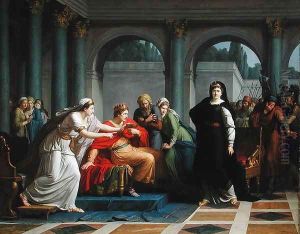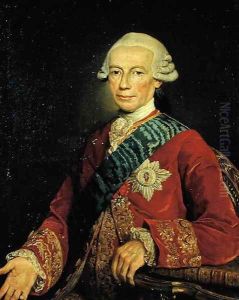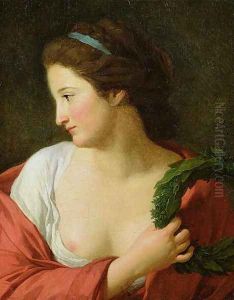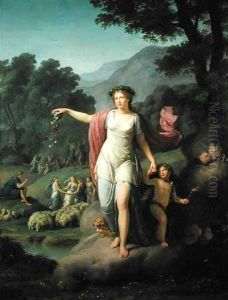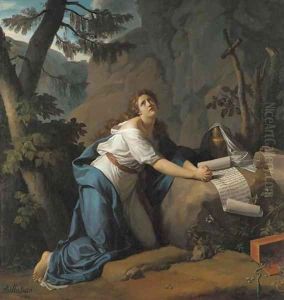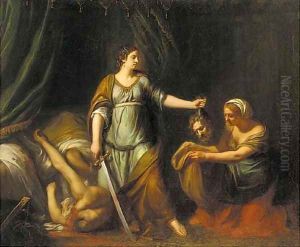Jean Joseph Taillasson Paintings
Jean Joseph Taillasson was a distinguished French painter, born in Bordeaux in 1745. He is well-remembered for his contributions to historical painting and portraiture, reflecting the classical and neoclassical styles that were prevalent during his time. Taillasson showed an early inclination towards the arts, prompting his move to Paris where he became a student of the celebrated painter Joseph-Marie Vien, a leading proponent of neoclassicism. Under Vien's tutelage, Taillasson honed his skills and developed a keen understanding of classical art, which deeply influenced his work.
Taillasson's career began to flourish after he won the prestigious Prix de Rome in 1769, an award that provided young artists the opportunity to study in Rome. His time in Italy was instrumental in shaping his artistic direction, exposing him to the masterpieces of the Renaissance and the burgeoning neoclassical movement. Upon returning to France, Taillasson enjoyed a successful career, receiving commissions from the French court and various other notable patrons. His works were characterized by their elegant execution, attention to detail, and the incorporation of classical themes and motifs.
Despite his success as a painter, Taillasson also made significant contributions to art theory and criticism. He was an articulate writer on art, and his observations and critiques were well-regarded by his contemporaries. His writings provide valuable insights into the artistic debates and preferences of his time, particularly in relation to the emerging neoclassical style.
Jean Joseph Taillasson passed away in 1809, leaving behind a legacy that was celebrated for its adherence to classical beauty and its intellectual engagement with the art of the past. His works continue to be studied and admired for their contribution to the transition from Rococo to Neoclassicism in French art. Taillasson's life and career reflect the vibrant artistic culture of his time, and his achievements are a testament to his skill and dedication to the arts.
